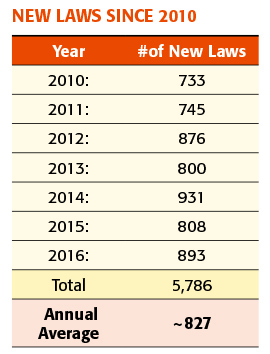
It takes a civil justice system shock analogous to San Francisco’s 1906 earthquake to dislodge California from its typically ignominious perch atop the annual Judicial Hellholes rankings. In 2014, for example, it was rampant corruption of New York City’s asbestos court that prominently featured the crumbling former Empire State’s then-most powerful politician (who has since been arrested, convicted and sentenced, pending a desperate appeal). This year it’s an utter disdain for sound science in the Show Me Your Lawsuits State of Missouri, particularly in St. Louis, and the wholly meritless lawsuits there fleecing defendants and driving consumer prices higher.
But as this report notes regularly, a lengthy book could be written every year about the inexorable expansion of civil liability in the once Golden State. Here collected are merely a few highlights (or lowlights, as it were). And as parasitic elements of the plaintiffs’ bar seek further liability expansions from state lawmakers, regulators and judges each year, no reasonable observer can believe that California’s litigation climate is going to improve anytime soon.





